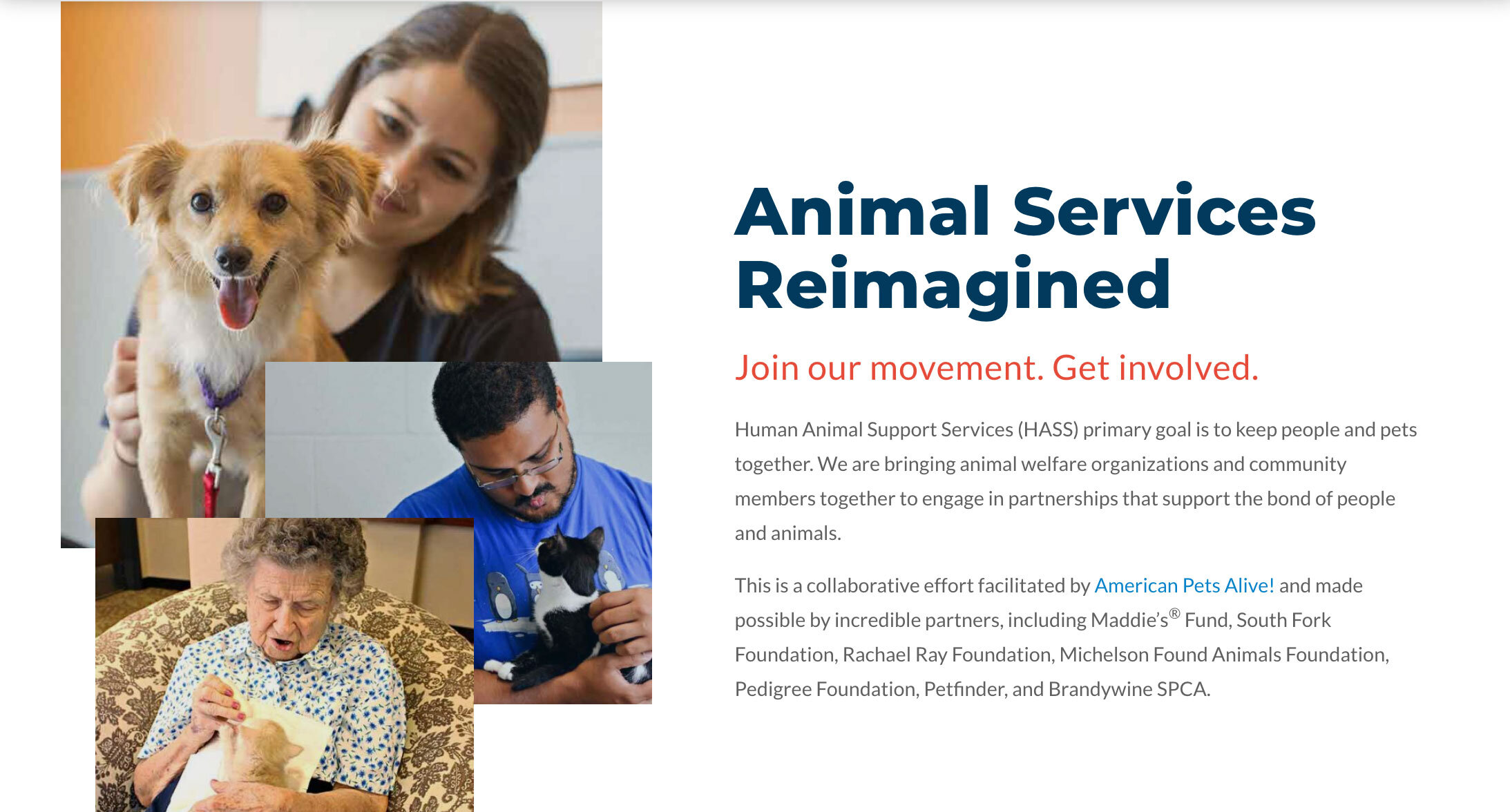Have you noticed? Fostering has become increasingly popular over the last few years! [There’s a whole new podcast about it, folks!]
Over the course of the Covid pandemic, unprecedented numbers of New Yorkers and Tennesseans joined our Foster Roster, offering to temporarily house homeless shelter pets during stay-at-home orders.
With this growth in fostering comes the recognition that it is time to move away from the old shelter model, the traditional “pound” many people might have in mind. Moving towards the foster-centric model is the way of the future. You’ll want to listen to Episode 4 of our “Why We Foster” podcast, further illustrating the background of how sheltering got here and what the initial shelters looked like. This is where the Human Animal Support Services (HASS) comes in. Founded in 2020 during the early days of quarantine, HASS is comprised of hundreds of national leaders and volunteers in the animal welfare industry. They strive to get animals out of shelters and into people’s homes, they help communities by keeping people and pets together, and encourage shelters to build out their foster programs. Another critical aspect of HASS is encouraging inclusivity and removing barriers so more people have access to fostering and adoption.
According to their website, “The HASS Coalition includes 37 pilot shelters from across the United States and Canada.”
Human Animal Support Services is based on elements that each pilot shelter will implement in their communities. HASS provides policies, tools and training to create meaningful change, reducing intake and housing most pets in homes, not kennels. Throughout the COVID-19 pandemic, caring people across the US and throughout the world have enthusiastically adopted, fostered, donated, fed and otherwise cared for animals in need. In this time of tremendous uncertainty, HASS provides a path forward. HASS aims to create critical engagement among animal welfare organizations to build a system to better address the modern needs of communities when it comes to animal services.
Along with being useful resource for shelters and rescues, HASS also provides tips and tools in for helping pets find comes in its excellent blog. We’ve compiled some of HASS’ foster articles, so you can stay in the loop on the national foster conversation.
6 Tips to Bring in Fosters and Adopters
Emergency foster and adoption initiatives can be incredibly powerful tools for getting pets into homes at critical times. Here are six simple steps and prioritizing strategies to engage your community in saving lives. They’ll help you bring fosters and adopters in the door and get pets out!
Emergency Tactics: How to Write an Urgent Social Media Plea for Adopters and Fosters
Knowing how to create and publicize an emergency initiative is the key to getting many pets into homes quickly. Use the following guidelines to ensure yours is successful.
The Things We Learned About Fostering During the Pandemic Can Solve Our Problems Today
During the pandemic, we learned about the power of foster to fundamentally transform our organizations. Remember when shelter after shelter showed photos of rows of empty kennels, because most or all pets were in foster homes?
Summer 2021 is shaping up to be somewhat of a “return to normal,” for sheltering—meaning, those kennels are full again and then some. Luckily, we can take the lessons we learned about fostering over this past year to, once again, rely on foster care as the primary way to house pets. Read more
Recruit More Fosters Now in Seven Simple Steps
Among the greatest challenges for shelters right now is the lack of available foster homes. What most shelters don’t realize is there are a few easy changes you can make today to double or even triple the number of fosters you can bring into your organization. Here’s how:
Barrier Busting Basics for Busy Animal Shelters
Barriers get in the way of us helping pets and people, and they prevent us from truly engaging our whole communities. Barriers are, by their nature, discriminatory. They disproportionately impact poor people and other marginalized groups. They also stop adoptions and foster placements. And in doing so, they slow down the entire system. Animals don’t move quickly through the shelter system, and that leaves less space for incoming cats, dogs, and other pets. How do these obstacles show up and what can we do about it?
For more information on HASS, visit www.humananimalsupportservices.org and to have some easy-listening feel-good audio for your trip to the store, or a walk with the dogs, listen to Why We Foster wherever you get your podcasts.






